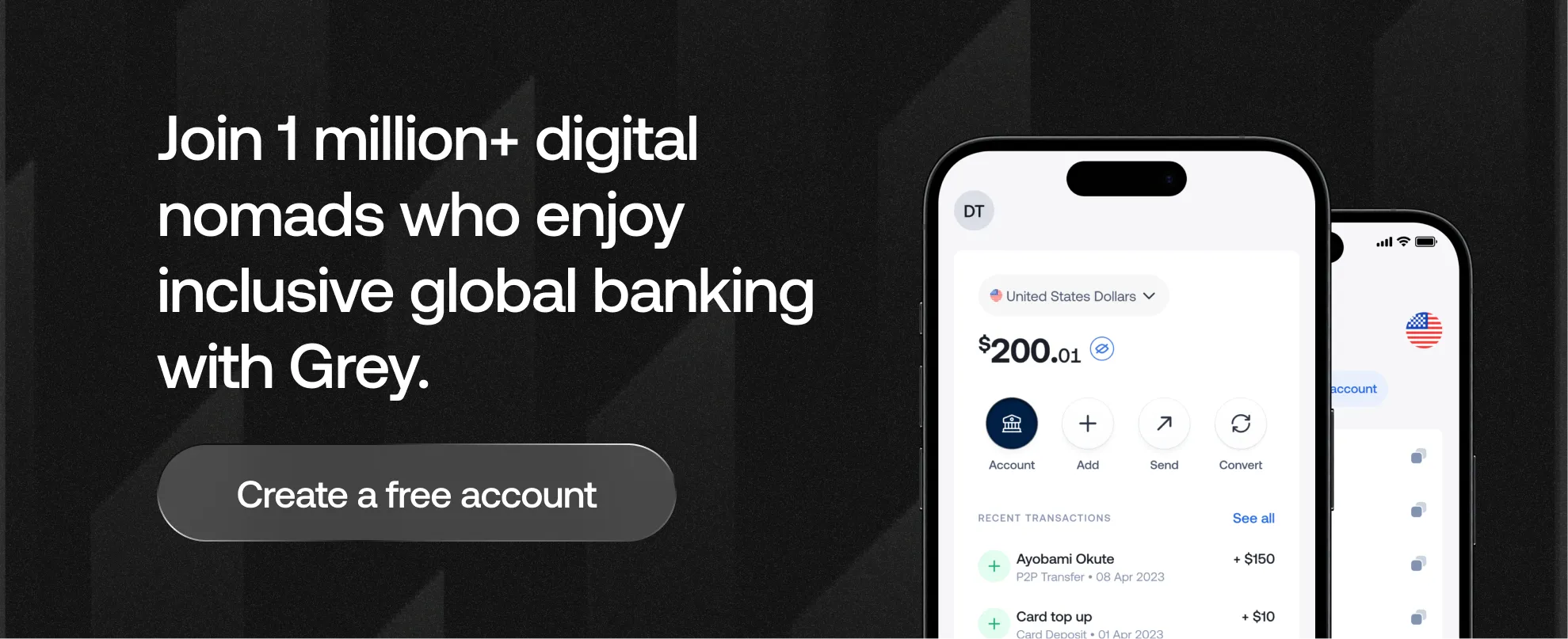

Visiting other countries is all fun and chill until you have a scoop of gelato in your mouth, but your payment service has decided to embarrass you. The fear of becoming financially stranded in a foreign country is a legitimate concern. Managing money in another country can be confusing, navigating different currencies, unfamiliar payment systems, high payment fees, and surprising exchange rates.
As a US resident, you have various payment options, ranging from cash to digital wallets, but choosing wisely can save you money and hassle. This article is a simple guide for US travellers visiting other countries who are wondering how to use their money abroad.
Don’t be in a hurry to leave the US. Here are some things you should do about your finances before you travel.
Banks often block transactions that appear unusual, especially those outside your usual location. Notify your bank to avoid declined payments if the system flags the transaction as suspicious.
Many US debit and credit cards charge foreign transaction fees (usually around 3%). Some also add currency conversion markups.
Exchange rates fluctuate daily. Using tools like Google, Xe, or Grey helps you avoid poor conversion rates at airports or hotels.
A multi-currency account lets you pay in multiple currencies and may offer better rates than banks or cash exchanges.
There are several options for managing money abroad, with each having its advantages and drawbacks. Opt for affordable payment options with favourable exchange rates close to the mid-market rate.
Carrying cash is essential, especially in markets or places where card payments might be unavailable. However, this should not be your primary method.
Pros:
Cons:
Airport and hotel exchange services often cost more than banks. You should expect markups or commissions. To avoid losing money, exchange a small amount at your US bank or credit union before leaving for better rates. Don’t keep all your cash in one place in case it’s lost or stolen.
Also read: How to open a USD bank account remotely without US citizenship
Your regular US debit card works at international ATMs in many countries. However, specialist travel debit cards incur fewer fees.
Pros:
Cons:
When using international debit cards abroad, always withdraw in local currency to avoid dynamic conversion fees. Review your daily and inform your bank of travel dates to avoid payment holds.
Travel credit cards are excellent for larger purchases, and they offer rewards and protections. The best US card for you will depend on your spending habits, whether you’re willing to pay an annual fee, and your preferred type of rewards (points, miles, or cashback).
Pros:
Cons:
It is recommended that you use your credit card for spending only and repay it monthly to avoid interest. Opt for local currency at checkout to avoid extra fees. Cards like the American Express Platinum offer lounge access but come with higher costs.
LDMAG1
Prepaid travel cards can be an excellent option for travel outside the US because they allow you to preload the card and lock in an exchange rate. This offers stability and helps with budgeting. They also offer better security since they are not linked directly to your main bank account.
Pros:
Cons:
Prepared travel cards like the Travelex Money Card or AAA Prepaid are great options. Some prepaid cards have a set fee per transaction. It is best to avoid using them for small transactions.
Also read: How freelancers in the US get paid by international clients
With the popularity of contactless payment, getting a virtual card or digital wallet is also a great option. You can link your cards to apps like Apple Pay or Google Pay on an NFC-supported phone and use them to make purchases and pay for train and bus rides. You can even set this up before you leave the US.
Pros:
Cons:
Grey provides a virtual USD debit card that simplifies international payments for US travellers. You can also access multi-currency accounts for free, and manage USD, EUR, and GBP from anywhere in the world. Grey supports payout in many local currencies and competitive exchange rates. Set up a Grey account as you prepare for your next trip, get your multi-currency accounts, and request your USD debit card.
Get started with Grey today for seamless international payments.




.svg)
Back to top